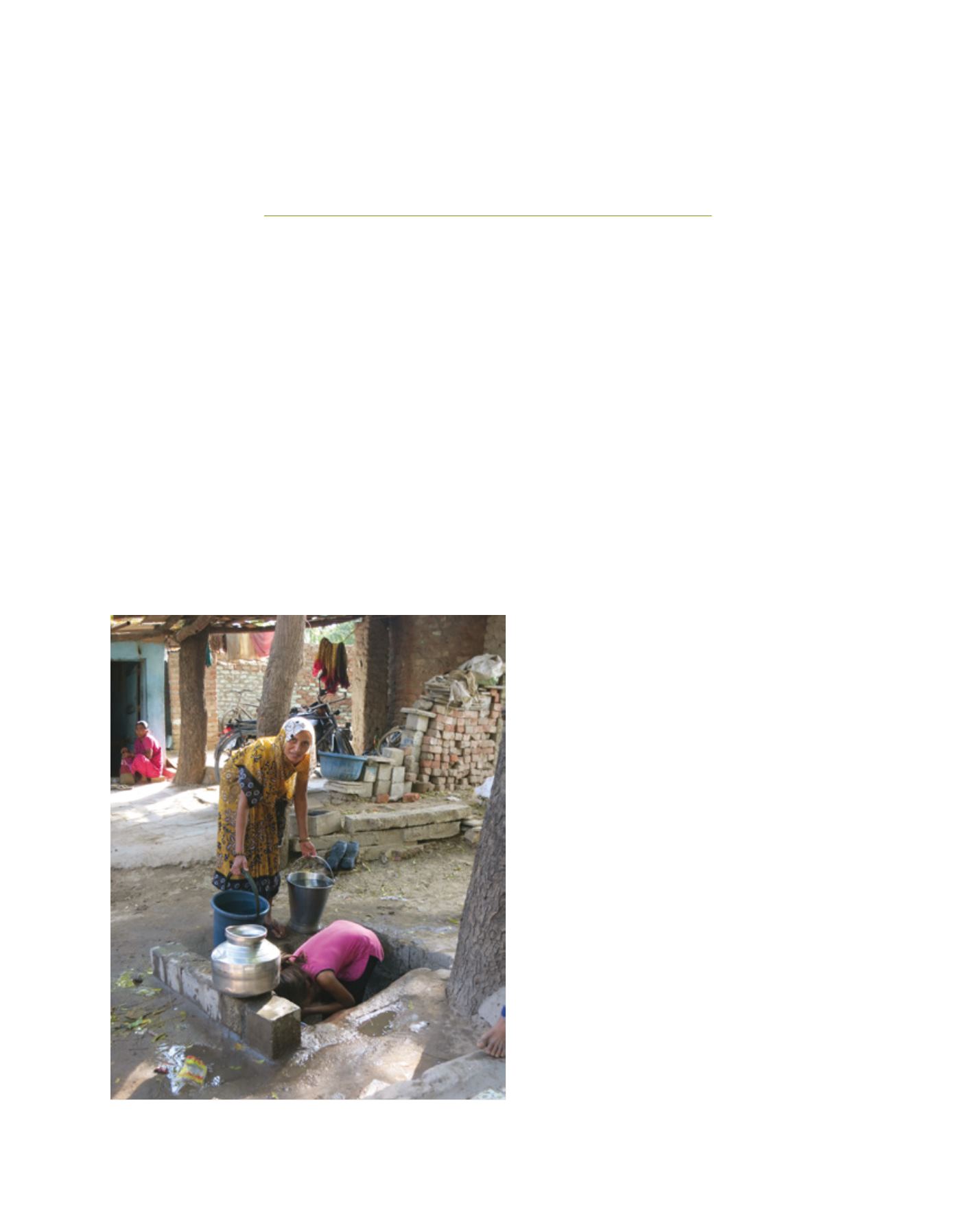

[
] 103
Coping with extreme weather
and water-related disasters
Kaoru Takara, Disaster Prevention Research Institute, Kyoto University, Japan
E
xtreme weather events frequently take place in many
parts of the world, causing various kinds of water-
related disasters such as wind storms, floods, high tides,
debris flows, droughts, and water-quality problems. This is
a key issue for the sustainability and survival of our society.
Interdisciplinary educational systems are necessary at all levels
from elementary to higher education, as well as social educa-
tion including the general public, industries and policymakers.
Extreme weather and water-related disasters
The Asia-Pacific region is one of the most disaster-prone areas
in the world. It is adversely affected by natural hazards such as
cyclones (typhoons), rainstorms, floods, landslides, and tsunamis
caused by earthquakes and volcanic eruptions under the sea. These
natural hazards bring severe disasters to all countries
in the region where social change, in terms of popu-
lation and economic growth, is the most dynamic in
the world.
1
Growth in this region has not, however, led to
advances in disaster risk management. The situation
is getting worse because infrastructure development
cannot keep up with growth. Policies for poverty reduc-
tion and alleviation are insufficient and the difference
between the rich and the poor is increasing.
Vulnerable populations are often those hit worst by
hazards and disasters. As the world’s cities expand to
occupy greater portions of the world’s flood plains,
riversides and shorelines, the risk of flooding will
continue to outpace both structural and non-structural
mitigation efforts.
“A natural hazard strikes when people lose their
memory of the previous one.” This quotation is from
Dr Torahiko Terada (1878–1935), a former Professor
of the University of Tokyo who influenced many
Japanese people as an educator, physicist and philoso-
pher. People tend to forget bad memories if they do not
experience a similar event for a long time. This igno-
rance and lack of experience increases the vulnerability
of society to disasters.
Typical examples
In 2012, Hurricane Sandy hit areas of the Caribbean
and the east coast of the United States. Economic loss
from this hurricane in the US was estimated at more
than US$50 billion and more than 170 people were
killed. Another famous example is Hurricane Katrina
in 2005, which killed at least 1,833 people and for
which total property damage is said to have been
US$81 billion.
Hurricanes, cyclones and typhoons often cause
serious damage due to strong wind, heavy rainfall and
flooding in riverine and coastal areas. It is often said
that their power will be increased by climate change,
which means that more serious damage will take place
in the future in many parts of the world.
African countries and other arid and semi-arid
regions suffer from water shortages, droughts, and
desertification. These are also brought about by
extreme weather conditions that continue for longer
periods in wider areas.
W
ater
E
ducation
and
I
nstitutional
D
evelopment
A community water post in a slum community in Ahmedabad, India; the community
set the tap below ground level to improve water pressure
Image: Dr Akhilesh Surjan, GSS Programme, Kyoto University


















